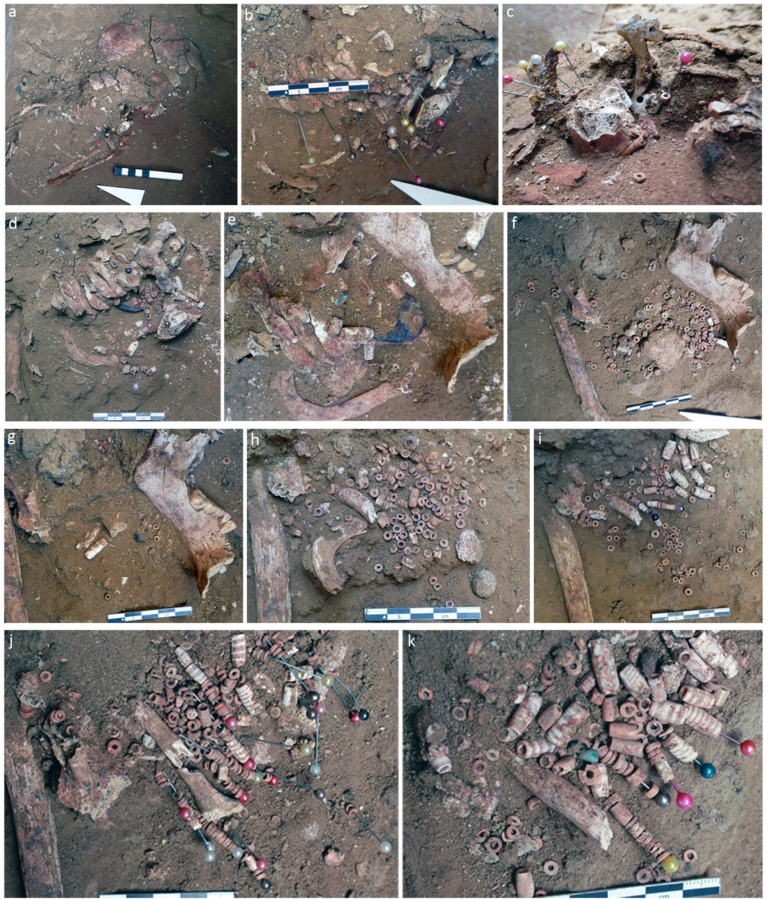Warriors of the Mycenaean Age: Unearthing connections between Hittite artifacts and texts and their echoes in ancient Greek literature. An interplay of archaeology, mythology, and real history.
One of the most intriguing aspects of ancient history is the confluence of archeology, literature, and mythology. The culture and military strength of the Mycenaean civilization, evident around 1300 BC, have been famously encapsulated in a Hittite bowl depicting a Mycenaean warrior. Beyond the aesthetic beauty of the artifact, it offers a unique insight into the cross-cultural interactions in the ancient world and could potentially shed light on legendary Mycenaean raids in Anatolia, as well as the enduring impact of the Achaean presence in the region, as recorded in epic works like Cypria and the Iliad.
Mycenaean warrior depicted on a Hittite bowl, ca. 1300 BC
The bowl was found at Boğazköy and is now in the Çorum Archaeological Museum.
The figure has been identified as a Mycenaean warrior based on his armor and sword. There are no known combat scenes in Hittite art, and the style is unusually dynamic, so the bowl may have been incised by a foreign artist.
Mycenaean Warrior on a Hittite Bowl: Historical Significance
The Hittite bowl, dating from approximately 1300 BC, portrays a Mycenaean warrior in full battle gear, a testimony to the cultural intermixing that occurred during this era. It appears to be a Mycenaean warrior in battle gear, complete with a plumed and horned helmet, similar to the 'zoned' helmets worn by Aegean warriors around the Late Bronze Age. This depiction affirms the wide reach of Mycenaean influence and indicates a level of respect for Mycenaean martial prowess. Not only does the artifact imply Mycenaean-Hittite interaction, but it may also suggest a record of the legendary Mycenaean military incursions into the region of Assuwa, a confederation of states in western Anatolia.
Dendra panoply
Archaeological Museum of Nafplio: Front view of Mycenaen armour and boar's tusk helmet from chamber tomb 12 of Dendra cementery (end of 15th century BC).
By C messier
Assuwa and the Mycenaean Raids
The precise nature of the Mycenaean interactions with Assuwa remains largely speculative due to limited historical sources. Still, the Hittite bowl with the Mycenaean warrior may serve as indirect evidence of these hypothetical raids. The Mycenaean military expeditions could have been driven by the desire for control over strategic areas, resources, or to curb the power of potential rival kingdoms. The existence of such military campaigns, as suggested by the artistic representation, opens up possibilities of a deeper Mycenaean imprint in Anatolia, which may be echoed in ancient Greek literature.
The Achaean Presence in Northwest Anatolia: Cypria and Iliad
The Achaean presence in Anatolia, the setting for many legendary episodes in Greek mythology, is evident in ancient epic narratives. Cypria, an epic poem that predates Homer, recounts an Achaean expedition sent to rescue Helen from Troy. In an ill-fated episode, Achilles and other Achaean warriors are said to have fought in Teuthrania, an area in northwest Anatolia south of Troy. This account could reflect historical memories of Mycenaean activities in the region, which were passed down in the form of epic stories.
Further affirmation of Achaean involvement in Anatolia can be found in Homer's Iliad. Here, we learn about Herakles sacking Troy during the reign of Priam's father, Laomedon. Herakles, with only six ships, is said to have successfully breached the city. The narrative seems to be a distant echo of an age when the Mycenaeans projected their power across the Aegean into Anatolia.
Hittite Records of Ahhiyawa Military Involvement
Ahhiyawa, widely believed by historians to refer to the Mycenaean Greeks, frequently appears in Hittite records, underscoring the intricate military alliances and conflicts of the time. The Hittite annals often describe Ahhiyawa leaders and mercenaries as formidable military forces, serving as allies to the western Anatolian confederations in their resistance against Hittite dominance. These texts provide an additional layer of evidence for the Mycenaean-Anatolian interactions, suggesting that the Ahhiyawa were not only involved in the region but had strategic alliances, often siding with local powers against the Hittite empire. The mercenary nature of these warriors offers insights into the complex geopolitical landscape of the era, characterized by fluid alliances, military campaigns, and power dynamics. The Hittite records, thus, further corroborate the profound impact of Mycenaean or Achaean forces in Anatolia, marking their place in the wider canvas of ancient Near Eastern history.
Drawing by Jill Curry Robbins.
The artistic depiction of a Mycenaean warrior on a Hittite bowl, while intriguing in its own right, also provides a fascinating link to the purported Mycenaean activities in Anatolia. As we navigate through the interconnected realms of archeology, literature, and mythology, we find a resonance of Mycenaean or Achaean presence in the region, immortalized in epics such as Cypria and the Iliad. These stories, possibly based on historical events, reflect an era of cultural exchange, conflict, and heroism, and serve as enduring reminders of the intricate tapestry that is our collective past.
























